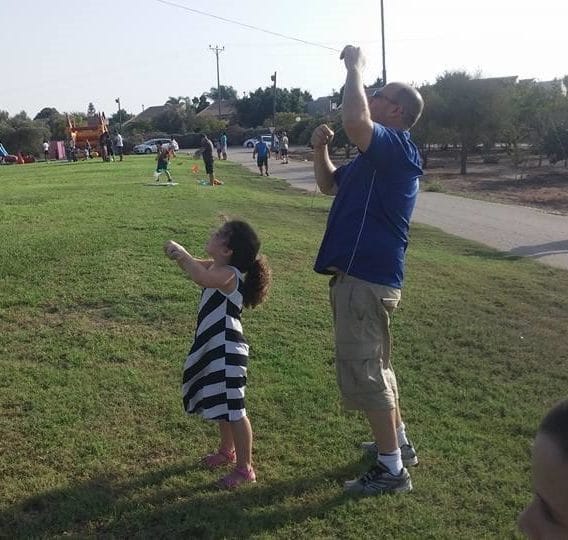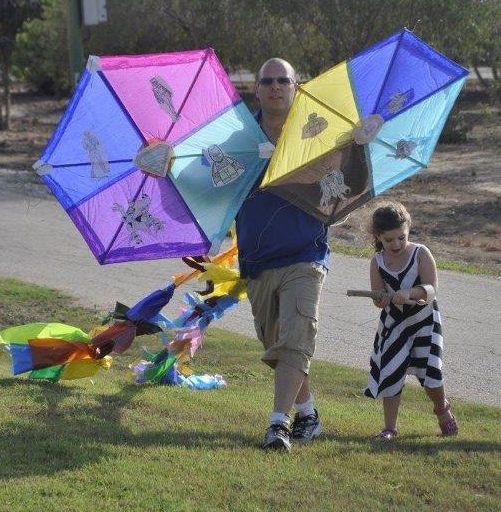-
12 July 2018
By: Tzachi Levy
A few weeks ago, my family and I participated in our first DC Kite Festival. Although it was not a windy day, we managed to get our kites into the sky. I am 41 years old, but once I hold a kite, I immediately feel like my son Oz, a happy, carefree 10-year-old.
That’s why it’s especially challenging to imagine that kites could be used to terrorize. But lately, the daily texts from my municipality back home in Israel have looked like this:
- 3 Terror Kites today
- Fire has consumed another 50 acres of our fields
- Thank you to all the volunteers who are helping to control the fires
I’ve been getting texts like this every single day for the last several weeks. Some days, the number of terror kites are higher and some days it’s only one or two – but there is never a total reprieve from the firebombs attached to kites or balloons and launched into Israel from Gaza.
There are so many reasons to be upset and angered by reports such as these. Just to begin, let me explain the landscape of the region. Israel is lacking in rainfall; the southern part even more so. There are already so few plants and crops which have survived the boiling summer and cold winter of the south.
It’s truly heartbreaking to see the photos being sent to me: the smoking black landscape that now covers all the places I used to go with my family for hiking, biking and camping. Now, it’s all black. It’s all smoke.
The DC festival was not the first time that we flew kites together as a family. It has been an annual tradition on the Kibbutz we call home, Kfar Aza, to gather on one of the fields and participate in a special kite-flying event. We build our kites together in the morning, and in the afternoon, gather to release them into the sky. Once the kites reach their highest point, we write our wishes on small pieces of paper, attach them to the kite strings and watch them fly, far away from the us below, to One above in the sky.
Last year, after sending the notes to the sky, I asked Oz, “What was your wish?” thinking he had asked for a new bike, maybe a new book or perhaps just some ice cream.
“Aba,” he replied, “I asked for peace.”
There is a very intimate relationship between a person and his kite. You let go of the kite, but still hold on to the string. You release the string as the kite catches the wind and rises to the sky. Sometimes, you’re not sure if the kite is driving you, or if you are driving the kite. One is holding the ground, the other holding the sky. The string which connects the person and his kite is extremely important. If you disconnect the string, you’ve lost the purpose of the kite altogether.
The people living in the south of Israel have been holding those strings for many years. They are holding the ground, while keeping their heads in the sky. They refuse to give up and remain optimistic: building their communities and continuing to pursue their dreams.
On the other side of the fence, I fear people are letting go: They are losing their kite, the string, their hold between their dreams and their reality, and the biggest loss of all: hope.
There is a phrase in Hebrew: Ein hasa’ar mashmid et hazera hatamun amok b’adama, which means, “The storm or the fire will not destroy the seeds if they are planted deep in the ground.” The people living in the south of Israel have planted their seeds deep within the earth. I trust that the burnt soil will soon be replaced by new growth.
This all a tragic tale that is happening now. For me, taking the innocent symbol of a kite and transforming it into a war machine is heartbreaking. I’m still holding onto the string that connects me with my kite, my dream and my son’s wish for peace.


